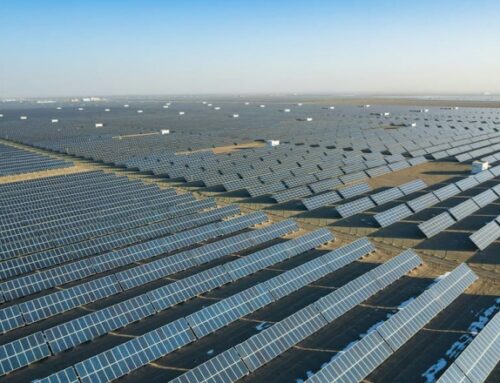This week’s unholy mix of drought, wind, and fire in Southern California » Yale Climate Connections
January 7, 2025
A prolonged, top-end bout of damaging winds will hit parts of Southern California from Tuesday to Thursday, January 6-8. The winds themselves could bring serious havoc, knocking down trees, limbs, and power lines. An even bigger worry is fire: the fierce gusts will scrub a landscape parched by one of the driest starts to the water year in Southern California history, so any wildfire that gains traction could be devastating.
As of midday Tuesday, gusts of 84 mph had already been recorded on Magic Mountain, just north of the San Fernando Valley, and 50 to 70 mph gusts were already becoming widespread. A fast-moving fire had erupted by late morning above Pacific Palisades, quickly growing to 200 acres before noon PST.
Strong winds in Pasadena pushing 60 MPH, with gusts in the hills to 80 MPH. @NWSLosAngeles pic.twitter.com/f9d6VCi9qD
— Edgar McGregor (@edgarrmcgregor)
The worst is likely to play out late Tuesday and on Wednesday when parts of Ventura and northern Los Angeles counties can expect “extremely critical” fire weather, the highest possible category in outlooks issued by the NOAA/NWS Storm Prediction Center.
Communities at the greatest fire-weather risk lie along the north side of the San Fernando Valley and into the adjacent higher terrain, including Santa Clarita, Simi Valley, Moorpark, San Fernando, and La Canada Flintridge.
Critical fire-weather conditions (just one step down from “extremely critical”) will extend over a much broader area, possibly affecting millions of people from the greater Los Angeles to San Diego regions and into the Inland Empire. Widespread wind gusts in the 50 to 80 mph range will extend all the way to the coast in some areas, especially north of Los Angeles, and gusts could range as high as 100 mph in the mountains and foothills.
“Given the intensity of the winds, extreme fire behavior appears likely should ignitions occur,” warned the Storm Prediction Center in an outlook issued early Tuesday.
Strong winds are coming. This is a Particularly Dangerous Situation – in other words, this is about as bad as it gets in terms of fire weather. Stay aware of your surroundings. Be ready to evacuate, especially if in a high fire risk area. Be careful with fire sources. #cawx pic.twitter.com/476t5Q3uOw
— NWS Los Angeles (@NWSLosAngeles)
The preconditions for a January fire in Southern California couldn’t be much worse. After two years of generous moisture (especially in 2022-23), the state’s 2024-25 wet season has gotten off to an intensely bifurcated start: unusually wet in NoCal and near-record dry in SoCal. We’re now in weak to marginal La Niña conditions, and La Niña is typically wetter to the north and drier to the south along the U.S. West Coast, but the stark contrast this winter is especially striking. Two cases in point, looking at rainfall from October through December 2024:
- Eureka, CA: 23.18 inches (12th wettest in 139 years of data; average 15.27 inches for 1991-2020)
- San Diego, CA: 0.14 inches (3rd driest in 175 years of data; average for 1991-2020 was 2.96 inches)
Southern California had not yet pushed into severe to exceptional drought as of December 31, according to the U.S. Drought Monitor. But the landscape has been drying out quickly, as reflected in Fig. 1 below of the Evaporative Demand Drought Index (a measure of how “thirsty” the atmosphere has been over a given time frame).

On top of the unusually dry conditions for early January, we’re now in the heart of the Santa Ana wind season. These notorious and dangerous downslope winds, which occur when higher-level winds are forced over the coastal mountains and toward the coast, typically plague coastal Southern California a few times each year. This week’s peak winds may arrive more from the north versus the northeast, compared to a classic Santa Ana event, and the associated wind-bearing mountain waves (which are shaped by the vertical temperature profile at mountaintop level) could punch further toward the coast than usual.
The National Weather Service warned that this could be the strongest Santa Ana wind event in Southern California in over 13 years, since Dec. 1 2011, when Whitaker Peak (elev. 4120’) in Los Angeles County recorded a gust of 97 mph (156 km/h). The winds toppled thousands of trees, and over 200,000 homes lost electricity, mostly in the San Bernardino Valley towns of Altadena and Pasadena
There’s no research indicating that downslope winds like this are becoming more intense or frequent with human-caused climate change, or that we should expect them to. But it’s abundantly clear that fire season is lengthening in Southern California, as documented in this 2021 study by California weather expert and climate researcher Daniel Swain, and it’s likely to continue stretching out (see this 2022 study). These shifts will open the door for summer-dried vegetation to stay parched and highly flammable until the winter rains arrive (even if that’s after New Year’s Day).
Although this week’s setup isn’t unusually warm, higher temperatures overall are making droughts more dangerous by allowing more water to evaporate from landscapes and reservoirs.
Clarity Corner: The problem with “hurricane-force wind gusts”
There have already been media references to this week’s Southern California winds possibly delivering “hurricane-force wind gusts.” This term can be misleading, though. Hurricanes are defined as tropical cyclones with sustained winds of at least 74 mph (65 knots or 119 km/hr). But the peak wind gusts in a given hurricane are typically 20 to 30 percent higher than the top sustained wind. So a minimal hurricane with 75 mph sustained winds can be expected to produce peak gusts in the range of 90 to 100 mph.
Where this gets tricky is that wind gusts of 75 mph or more are sometimes referred to as “hurricane-force.” But it doesn’t take a hurricane to produce such gusts. Even a tropical storm with top sustained winds of only 60 mph can do the trick. Moreover, the winds in a mountain-related downslope windstorm are typically far more variable than in a hurricane, sometimes even going from near-calm to peak strength in a matter of a few minutes. So keep in mind that a Santa Ana windstorm with peak gusts of, say, 80 mph – while still fearsome and highly dangerous – wouldn’t pack the same wind punch as a Category 1 hurricane.
Jeff Masters contributed to this post.
Only 28% of U.S. residents regularly hear about climate change in the media, but 77% want to know more. You can put more climate news in front of Americans in 2025. Will you chip in $25 or whatever you can?
Search
RECENT PRESS RELEASES
Related Post


